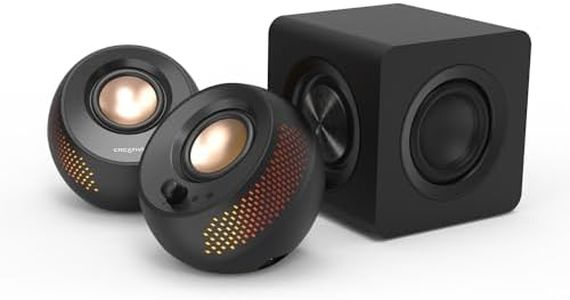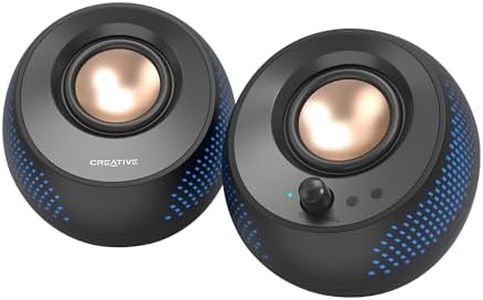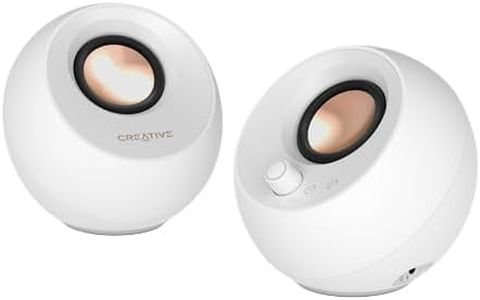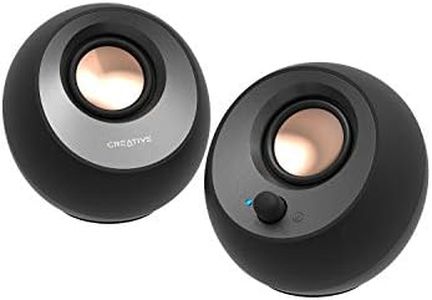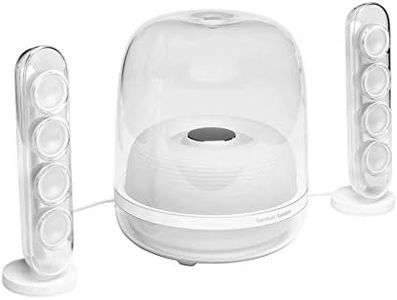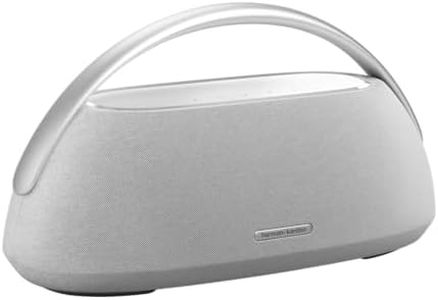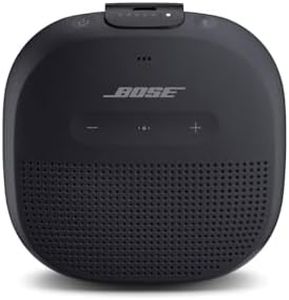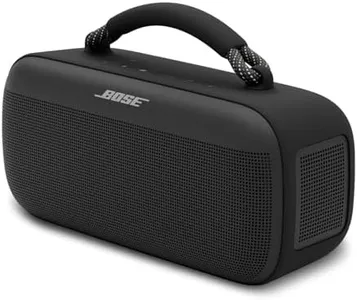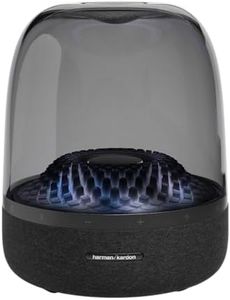We Use CookiesWe use cookies to enhance the security, performance,
functionality and for analytical and promotional activities. By continuing to browse this site you
are agreeing to our privacy policy
10 Best budget PC speakers
From leading brands and best sellers available on the web.Buying Guide for the Best budget PC speakers
Choosing the right PC speakers can make a big difference in your everyday computer experience, whether you're watching movies, listening to music, or just getting clearer sound for your video calls. It's important to know what matters most to you—great sound, compact size, ease of setup, or extra features. By understanding the main specifications, you can confidently pick a set of PC speakers that matches your listening needs and your environment.Speaker Configuration (2.0, 2.1, etc.)Speaker configuration refers to how many speaker units are included and what kind they are. A '2.0' system has two speakers (left and right), which is good for simple stereo sound. A '2.1' system includes two speakers plus a subwoofer for extra bass, which enhances movies and music. More advanced setups (like 5.1) have additional speakers for surround sound, but these are less common for budget setups. If you mostly use your PC for calls, video, or casual music, a 2.0 set is usually enough; if you like your audio to have a bit more depth and punch, considering a 2.1 might be a better fit.
Wattage (Power Output)Wattage tells you how much power the speakers can use to produce sound, which usually relates to how loud and full the speakers can get. Lower wattage (about 5-10 watts) is enough for normal desktop use in a quiet room. Medium wattage (10-25 watts) will be noticeably louder and fuller, suitable if you want to fill a larger room or enjoy music with punchier volume. Higher wattage is rare in budget speakers but is better for big rooms or noisy environments. Think about your space and how loud you like your audio; for most desk setups, medium wattage gives a nice balance.
ConnectivityConnectivity describes how you plug the speakers into your PC—most commonly with a 3.5mm audio jack or USB, and sometimes through Bluetooth. Wired (3.5mm or USB) connections are usually simple and reliable, perfect if you keep your speakers close to your PC. Bluetooth offers wireless flexibility if you want to play audio from your phone or move your speakers around. Think about how you want to use the speakers; if you just want straightforward desktop sound, wired is easiest, but if mobility or connecting to other devices is important, look for Bluetooth options.
Frequency ResponseFrequency response tells you the range of sounds a speaker can produce, from bass (low) to treble (high). It's shown as two numbers like '60Hz-20kHz.' Lower first numbers mean deeper bass; higher second numbers mean crisper highs. For most users, a standard frequency range (around 70Hz to 20kHz) is fine for casual listening. If you want thumping bass or very crisp treble, look for a broader range, keeping in mind budget speakers tend to have a more limited range. Ask yourself if extra bass or clear highs matter for how you use your PC.
Size and DesignSize and design affect how the speakers fit on your desk or in your room, as well as how they look. Smaller speakers are easy to place anywhere and are best for personal use at a desk. Larger ones often sound fuller but take up more space. If you have a compact workspace, slim or vertical designs help save room. If you care about aesthetics or matching a certain style, pay attention to finishes and colors. Think about how much space you have and whether you want something discreet or a feature piece for your setup.
